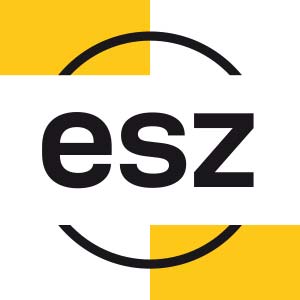Optics
Optical quantities
The metrological evaluation and calibration of power metres, light sources, opacity filters, illuminance, attenuators and OTDRs has become increasingly important in automotive engineering, communications technology, medical technology, motor vehicles and consumer electronics.
With the optoelectronic calibration systems and measuring stations for fibre optic cables and fibre optic applications, wavelength, power, attenuation and gain are calibrated in the fibre optic laboratory for ranges between 633 nm and 1650 nm. In addition, esz AG is one of the few laboratories in the world to calibrate illuminance metres (luxmetres) up to 100,000 lux. Whether in medical technology, clinical surgery or industry, the required object and workplace lighting for lighting-critical applications can be guaranteed. But there is also a piece of esz in many automotive businesses: Calibrated transmission filters enable reliable testing of opacimetres (opacity metres) and diesel vehicles (compression-ignition engines).
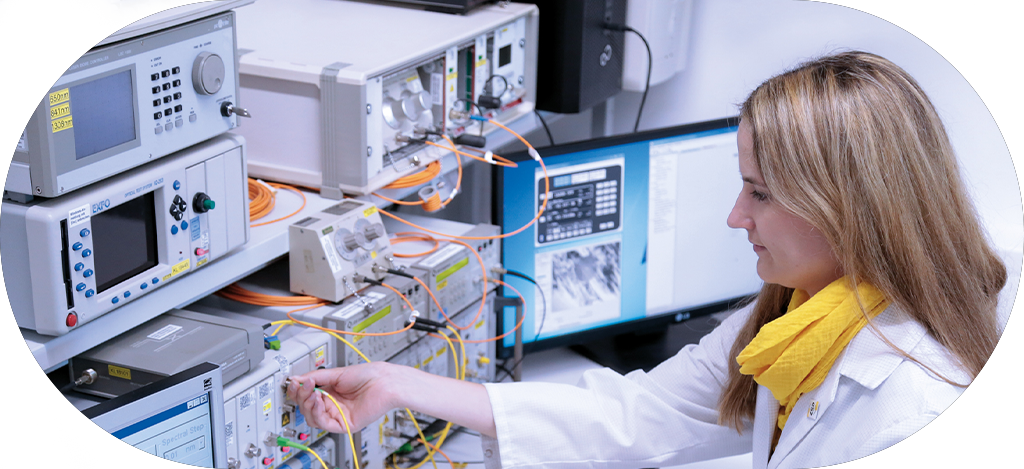


Your calibration offer
We’ll be happy to provide you with a no obligation quote for the calibration of your measuring devices.
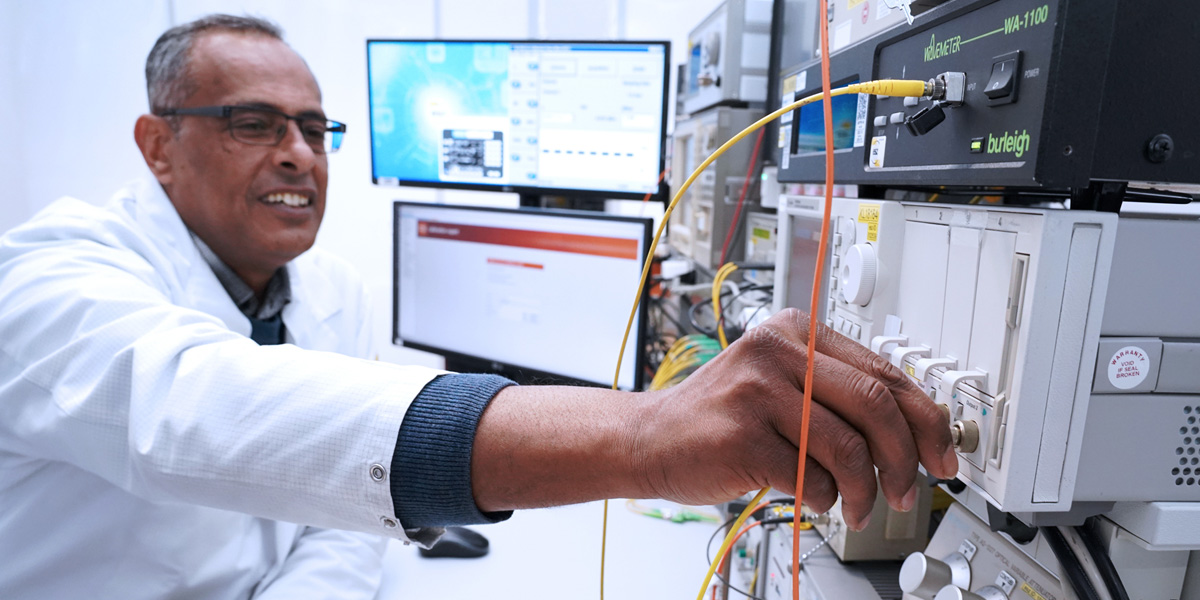
Fibre optic
With the optoelectronic calibration systems and measuring stations for fibre optic cables and fibre optic applications, wavelength, power, attenuation and gain are calibrated in the fibre optic laboratory for ranges between 633 nm and 1650 nm in the fibre optic laboratory, among other things. Each calibration requires maintenance and visual inspection of the optical inputs and outputs. At 400x magnification, we record the condition of the light-conducting elements before and after professional cleaning. The assessment of all mechanical impairments guarantees the user the lasting quality of the devices in use.
From ultraviolet to infrared: Wavelength ranges from 633 to 1650 nm
The fibre optic / fibre laboratory is also accredited for calibrations in visible light (650 nm) and in the long-distance range (infrared, e.g. 1550 nm). esz AG is one of the few DAkkS-accredited laboratories for optical (radiometric) measurands that can also issue accredited calibration certificates in the fibre optic field in accordance with DIN EN ISO/IEC 17025 and offers calibrations of plastic (POF) and fibre optic communication electronics.
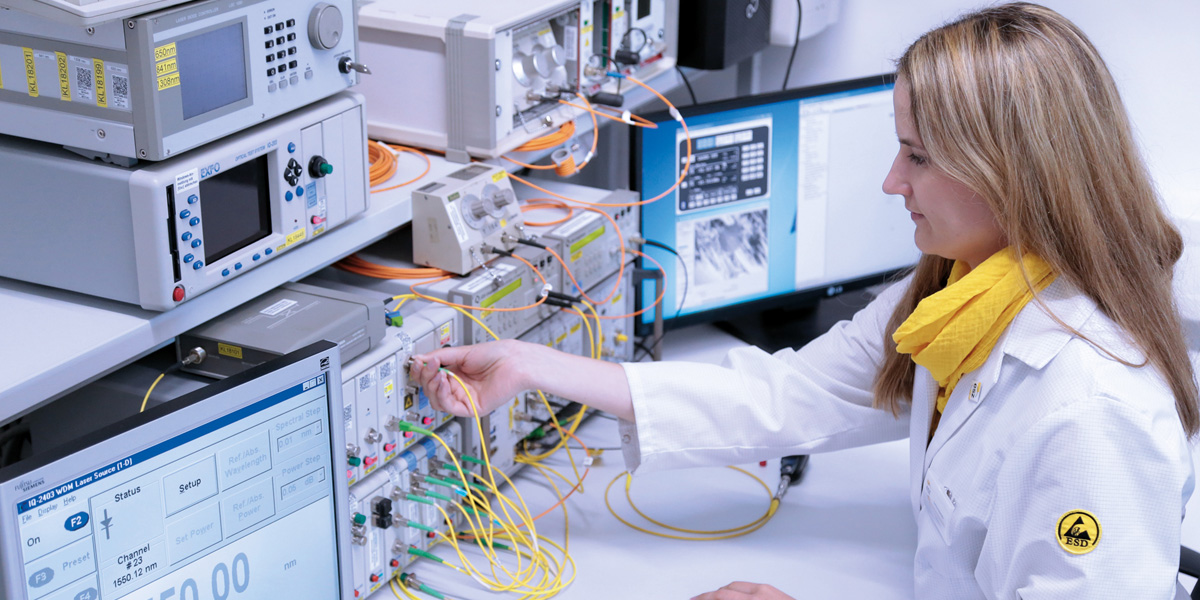
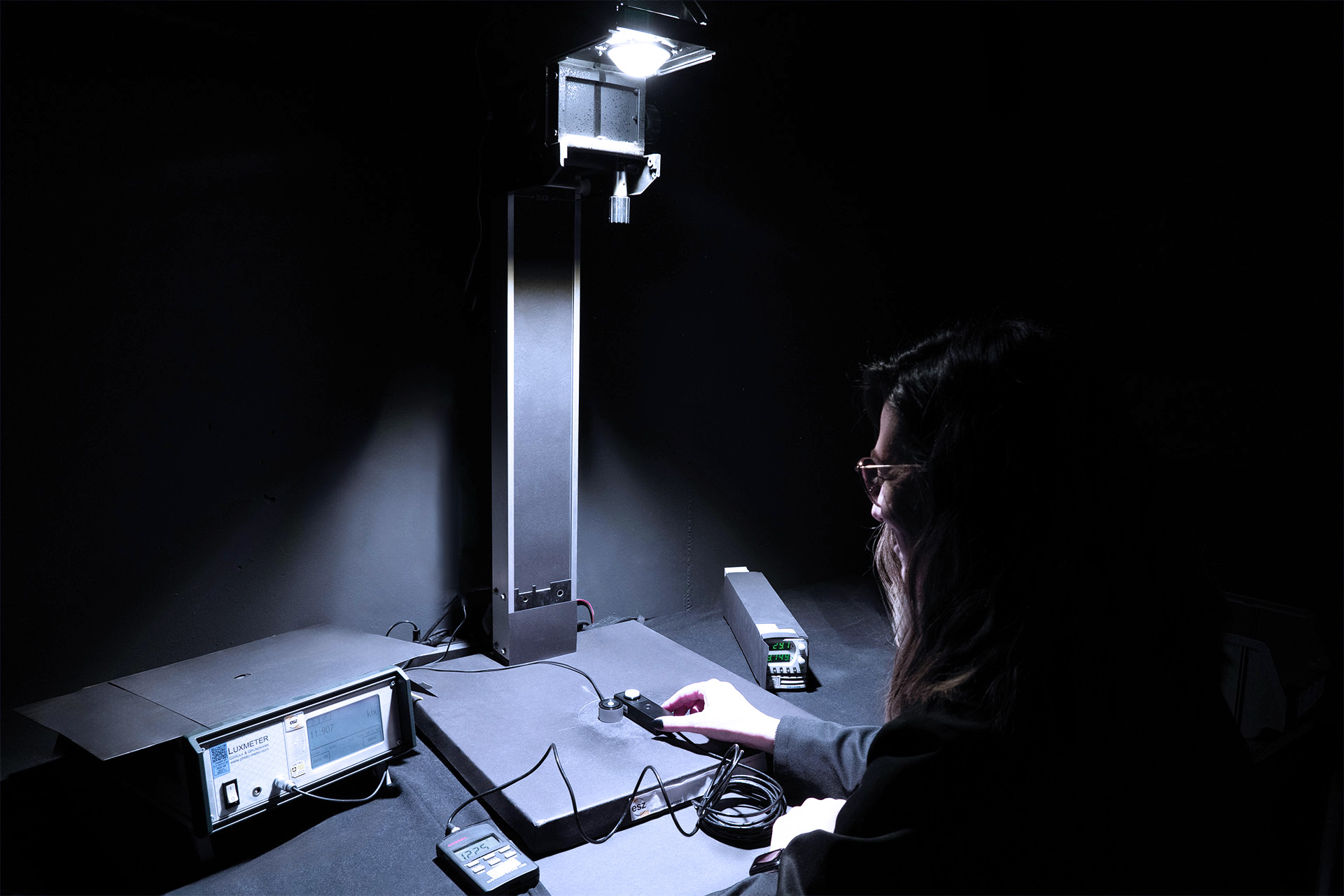
Illuminance level
LEDs are now the most widely used light source, e.g. in cars, televisions, floor and ceiling lights and in workplaces or as street lighting. However, the calibration conditions of most laboratories do not cover this increased demand. In the esz AG calibration procedure, the behaviour of the devices is determined using two different LEDs (colour temperature approx. 3000 K and approx. 6000 K) and a standard light bulb (halogen, colour temperature 2856 K). As luxmeters react very strongly to different light sources due to their design, customers and users benefit from calibration results that are closer to reality by using different light sources. This is the only way to determine which display deviations occur when used in rooms with different light sources or different spectral conditions. The calibration certificate states the measurement results with all three lamp types. In addition, esz AG supplies measurement data from the spectral and colourimetric measurement of the
lamps used as proof of traceability. In addition to comparing the lamp types, a linearity test from 0 lx to 100,000 lx is carried out under LED lighting.
Turbidity filter / Transmission filter
Exhaust gas measuring devices for Compression-ignition engines (opacimeters) which are used for the main inspection of vehicles, must be calibrated by an accredited calibration laboratory. Turbidity filters are used as test equipment when calibrating these devices. These turbidity filters can be accredited and calibrated by esz AG for the measured variables transmission, turbidity and turbidity coefficient. The measurement is always carried out at the wavelength at which the turbidity filters will later be used. Calibrations are possible at wavelengths in the range from 400 nm to 800 nm and are not limited to opacity filters for the calibration of opacimetres.
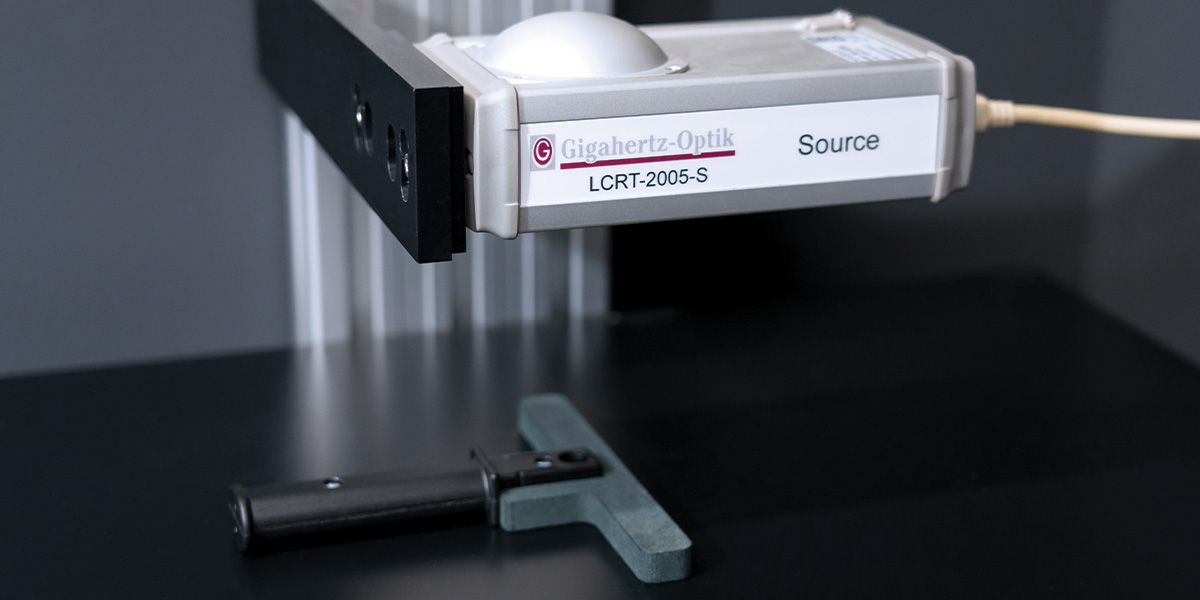

Service
Logistics Expert
With the esz AG collection and delivery service, your sensitive test equipment is always in safe hands. Choose between individual collection and delivery or our weekly delivery service with fixed routes.
Your benefits
- Full service – everything from a single source
- DAkkS-accredited calibration of many optical testing devices, also in the fibre optic field
- Calibration of the wavelength ranges from 633 to 1650 nm
- Maintenance and visual inspection of the optical inputs and outputs
- Illuminance level: Certificate of the type of lamp used as proof of traceability
- Turbidity filter
More information
DAkkS & Factory/ISO calibration
- Photometric quantities
- Illuminance level
- Transmission
- Turbidity level
- Turbidity coefficient
- Radiometric quantities
- Optical performance
- Optical attenuation
- Wavelengths
- Kilometric attenuation
- Plastic (POF) and fibre optic communication electronics
- Optical power metres in multimode/single mode/plastic fibre data traffic networks
- Optical sources
- Optical attenuators
- Illuminance meters / Luxmeter
- Turbidity and transmission filters
- Wavelength meters
- Optical Time Domain Reflectometer – OTDR Calibration
Calibration of kilometric attenuation and optical fibre distance in the optical fibre artifact end reflection method according to EN 61746 – 8.4.2.1
- Optical Power Meter Calibration – optical power measurement
Optical power meters in multimode/single mode/plastic fibre data traffic networks Absolute calibration factor and non-linearity of fibre optic receivers. PTB and METAS traceable
- Optical Light Source Verification – Calibration of optical sources
Calibration of light power, stability, half-width and wavelength of fibre optic sources and transmitters.
- Optical Attenuator Verification – Calibration of optical attenuators
Calibration of optical return loss/passband attenuation, linearity and repeatability
- PMD Calibration
NPL traceable PMD artifact for 10ps Low Mode Coupled PMD (Polarization Mode Dispersion).
- Serial data
Pulse mask calibration (optical) up to STM-64 for long-range applications
